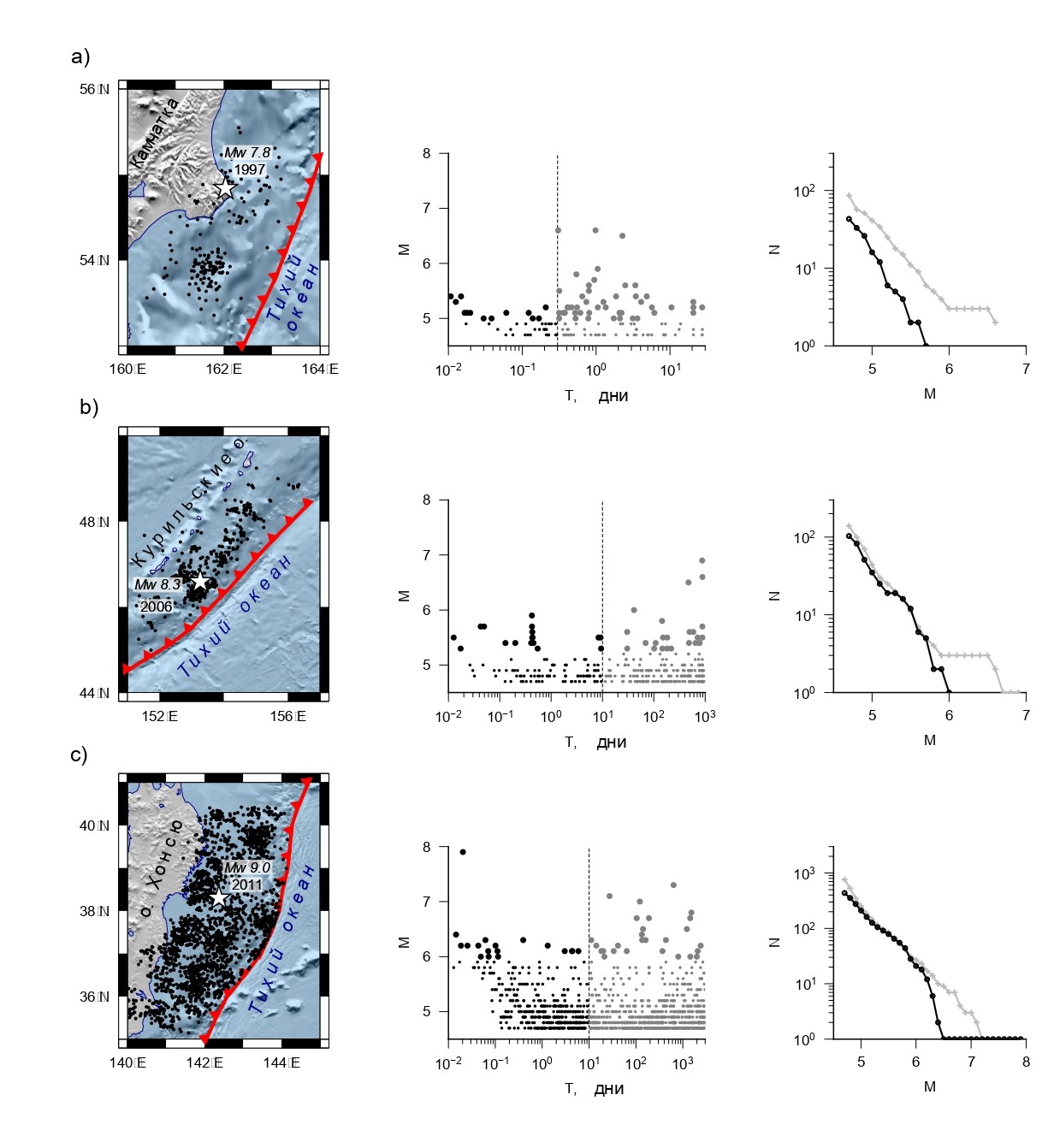Earthquakes are accompanied by postseismic processes that begin right after the main shock and are manifested in aftershocks and aseismic deformations. The main driving mechanisms of postseismic deformation are viscoelastic relaxation in the crust and in the Earth’s upper mantle and postseismic slips (afterslip), reflecting the frictional properties of the plate interface in the source zone of a large earthquake. Afterslip may occur as aftershocks and/or slow aseismic slips (creep).
In this work, researchers analyze the earthquake-size distributions of aftershocks in time. Researchers base on the connection between the shape of the recurrence curves and the deformation type and seismic coupling. It have been shown that a significant aseismic slip (creep) causes a deficit of large events and leads to a bend of the recurrence curve. Researchers analyze the aftershocks of the 1997 Kronotsky earthquake in Kamchatka, Mw7.8; the 2006 Simushir earthquake in the Kuril Islands, Mw8.3; and the 2011 Tohoku earthquake in Japan, Mw9.0. An increase in the aftershock magnitudes and the number of large events with time is observed for all three earthquakes (Fig. 1а–с). Earthquake-size distribution of early aftershocks also show a lack of strong events compared to late aftershocks, which is manifested in the greater slope observed for strong early aftershocks (Fig. 1a–c). Thus, the earthquake-size distributions of early aftershocks has features characteristic of zones with significant aseismic slip.

In a strong earthquake, the large coupled zone (asperity) is destroyed; however, the zone of the post-seismic deformations exceeds significantly the sizes of the region of large coseismic slips, extending for the large zones of weak coupling, where an afterslip occur and most aftershocks are concentrated. The aftershock recurrence curve bends at the initial stage of the post-seismic process due to high afterslip rates. This phenomenon is based on the finite size effect: the maximum magnitude of aftershocks is limited by the typical size of small isolated asperities in the weak coupling regions of the subduction zone. Later, the afterslip rate drops, and the size distribution of the aftershocks takes on a normal form. This phenomenon is similar to the correlation of the recurrence curve bend with the creep rate. Analysis shows that afterslip plays a key role in the initial stage of the post-seismic process.
Source: Shebalin P.N., Vorobieva I.A., Baranov S.V., and Mikhailov V.O. Deficit of Large Aftershocks as an Indicator of Afterslip at the Sources of Earthquakes in Subduction Zones // Doklady Earth Sciences. 2021. V. 498. № 1. P. 423–426. DOI:10.31857/S2686739721050170

